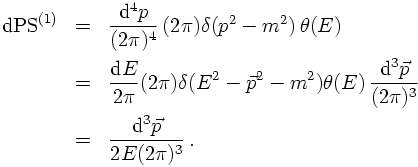UNITS AND FOUR VECTORS
Before going into much detail about kinematics, it is important to remember a number of basic identities. First of all, it must be clear that in particle physics most things move with large velocities - in other words with a considerable fraction of the speed of light. Since particle physics also is the world of quantum physics, it is common to set


FOUR MOMENTUM CONSERVATION: EXAMPLE
Of course, in physical processes, both energy and momentum must be conserved. This can easily be interpreted in a relativistically invariant fashion as four-momentum conservation. In particular, if, for instance, a particle with four-momentum p decays into two particles with four-momenta q and r, respectively, a(p) → b(q) + c(r), the momenta must satisfy

The determination of the exact energies of the two particles q and r in the rest frame of the decaying particle p is left as an exercise.
In order to integrate over four-momenta, as needed in the calculation of cross sections from the S-matrix (see above), a corresponding covariant volume element dP in momentum space needs to be introduced. Apart from the integration measure and some factors of 2π, there are two more ingredients, namely a δ-function incorporating the on-shell condition, and the requirement that all physical particle energies are positive. Taking together, this yields
